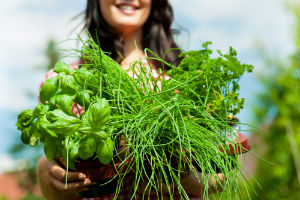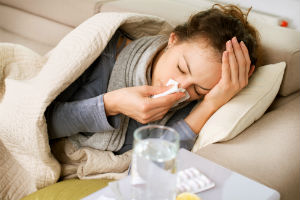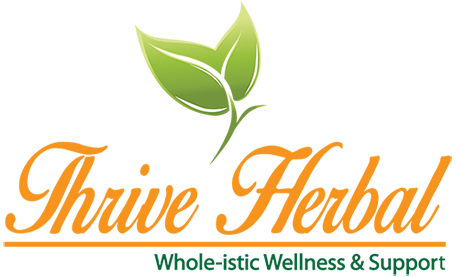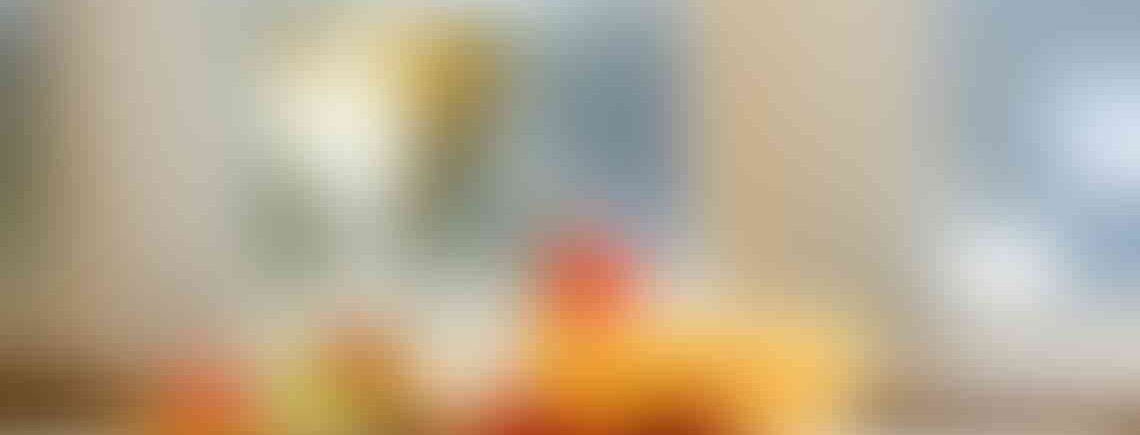10 Best Herbs for Female Hormone Balance
 Reduced sexual desire, a lack of energy, hormonal imbalance… all problems that can cause a great deal of stress for women. Of course, environmental toxins and hormone disrupting chemicals (like BPA) only make the situation worse. Fortunately, women of any age can take nutritional steps to naturally balance hormone levels. Here are, in no particular order, the 10 best herbs for female hormone balance.
Reduced sexual desire, a lack of energy, hormonal imbalance… all problems that can cause a great deal of stress for women. Of course, environmental toxins and hormone disrupting chemicals (like BPA) only make the situation worse. Fortunately, women of any age can take nutritional steps to naturally balance hormone levels. Here are, in no particular order, the 10 best herbs for female hormone balance.
1. Ashwagandha
A mainstay of Ayurveda, ashwagandha has been shown to reduce the stress hormones (ie., cortisol) which disrupt endocrine function and prompt premature aging. Ashwagandha stimulates blood flow to a woman’s reproductive organs to increase arousal and sensitivity, making it a popular choice for women who wish to regain their sex drive and satisfaction. Women experiencing menopause also report that ashwagandha helps to produce positive effects on hot flashes, anxiety, and depression. [1]
2. Avena Sativa
Generations of women swear by avena sativa — or oats, being its common name — as a libido enhancer, alleviator of menstrual cramps, and general aphrodisiac. It is believed to increase blood flow and stimulate the central nervous system, encouraging the physical and emotional desire for sex. Researchers also believe avena sativa frees bound testosterone, an essential hormone for sexual desire in both genders.
3. Catuaba bark
The Tupi Indians of Brazil discovered and celebrated the many health benefits of Catuaba, particularly its effect as a libido enhancer. According to Brazilian research, the bark contains yohimbine, a known aphrodisiac and powerful stimulant. It stimulates the central nervous system, thereby providing energy and a more positive mood. [2]
4. Epimedium
Commonly known as Horny Goat Weed, many women take epimedium for its incredible menopause-relieving effects. [3] Alkaloids and plant sterols, especially icariin, act similarly to testosterone and have been found more effective than many current drug therapies, but without the side effects. Like other hormone-balancing herbs, it also encourages blood flow to a woman’s reproductive organs.
5. Maca (root)
Also known as Peruvian Ginseng, the indigenous people of the Andes have used Maca root to approach infertility, sexual dysfunction, hot flashes, sleep disruptions, and even night sweats associated with menopause. [4] It’s also a commonly-used aphrodisiac and libido stimulant. This shouldn’t be a surprise as it’s loaded with phytonutrients and zinc, an element essential for supporting sexual-related hormones. Women who have used maca root report greater sexual desire and more satisfying sex. [5]
6. Muira puama
European explorers brought this little herbal gem, termed “potency wood,” back from the New World. It is known to calm nerves and relieve anxiety, and it is also said to increase blood flow to the pelvic area. Women who use muira puama report greater sexual desire, more satisfying intercourse, and more intense orgasms. [6]
7. Shilajit
Prized by both traditional Indian and Chinese medicines, the Chinese consider it a Jing tonic, or a tonic which aids physical energy and sexual drive. It’s formed from organic compressed plant material from the Himalayas. The compound is then concentrated and purified to create a high-potency extract. Packed with nutrients, amino acids, and antioxidants, its fulvic acid passes easily across the intestinal barrier which expedites antioxidant availability. It also promotes vitality by stimulating cellular ATP production. [7] Shilajit is also known to alleviate anxiety, lift mood, and stimulate overall health. [8]
8. Suma
A popular aphrodisiac from the Amazon, suma root is sometimes referred to as South American Ginseng. It’s commonly used to improve mood, stimulate sexual desire, and encourage reproductive health. Research with animal models support these uses, noting it increases levels of estradiol-17beta, a powerful sex hormone essential to reproductive health and balanced hormone levels. [9]
9. Tongkat Ali
Tongkat ali is consistently referred to as as the greatest natural aphrodisiac known to man. Used in Malaysia by women to stimulate libido and increase the sensitivity of erogenous zones, Tongkat root also supports energy levels, cognitive function, and creates positive responses to stress. Researchers have found it boosts testosterone levels and promotes hormonal balance. [10] [11]
10. Tribulus terrestris
Popular in both Chinese and Indian cultures, Tribulus terrestris has a long-held reputation as an aphrodisiac. It may stimulate androgen receptors in the brain and encourage the body to use hormones more efficiently. Women who use the herb experience increased arousal, better sexual performance, and improved reproductive system health. [12]
A Final Thought
For many women, hormonal imbalance may be the reason for lost libido, fatigue, and sexual disinterest. Restoring hormonal balance may lead to the return of a natural confidence, positive outlook, sex drive, and satisfaction. When considering a hormonal-supportive supplement, always validate the quality of your supplement source. Many herbal supplements on the market use fillers or low-quality ingredients with reduced effectiveness. If you’re looking for a suggestion, I recommend Female Fuzion, it contains an incredible blend of some of the previously mentioned herbs.
Have you tried any of these herbs? How did they work? Leave a comment and share your experience!
References:
- Modi MB1, Donga SB, Dei L. Clinical evaluation of Ashokarishta, Ashwagandha Churna and Praval Pishti in the management of menopausal syndrome. Ayu. 2012 Oct;33(4):511-6. doi: 10.4103/0974-8520.110529.
- Campos MM1, Fernandes ES, Ferreira J, Santos AR, Calixto JB. Antidepressant-like effects of Trichilia catigua (Catuaba) extract: evidence for dopaminergic-mediated mechanisms. Psychopharmacology (Berl). 2005 Oct;182(1):45-53. Epub 2005 Sep 29.
- Wong SP1, Shen P, Lee L, Li J, Yong EL. Pharmacokinetics of prenylflavonoids and correlations with the dynamics of estrogen action in sera following ingestion of a standardized Epimedium extract. J Pharm Biomed Anal. 2009 Sep 8;50(2):216-23. doi: 10.1016/j.jpba.2009.04.022.
- Meissner HO1, Reich-Bilinska H, Mscisz A, Kedzia B. Therapeutic Effects of Pre-Gelatinized Maca (Lepidium Peruvianum Chacon) used as a Non-Hormonal Alternative to HRT in Perimenopausal Women – Clinical Pilot Study. Int J Biomed Sci. 2006 Jun;2(2):143-59.
- Uchiyama F1, Jikyo T2, Takeda R2, Ogata M2. Lepidium meyenii (Maca) enhances the serum levels of luteinising hormone in female rats. J Ethnopharmacol. 2014 Feb 3;151(2):897-902. doi: 10.1016/j.jep.2013.11.058.
- Waynberg J1, Brewer S. Effects of Herbal vX on libido and sexual activity in premenopausal and postmenopausal women. Adv Ther. 2000 Sep-Oct;17(5):255-62.
- Stohs SJ. Safety and efficacy of shilajit (mumie, moomiyo). Phytother Res. 2014 Apr;28(4):475-9. doi: 10.1002/ptr.5018.
- Carlos Carrasco-Gallardo, Leonardo Guzmn, and Ricardo B. Maccioni.
Shilajit: A Natural Phytocomplex with Potential Procognitive Activity. Int J Alzheimers Dis. 2012; 2012: 674142. doi: 10.1155/2012/674142. - Oshima M1, Gu Y. Pfaffia paniculata-induced changes in plasma estradiol-17beta, progesterone and testosterone levels in mice. J Reprod Dev. 2003 Apr;49(2):175-80.
- Shuid AN1, El-arabi E, Effendy NM, Razak HS, Muhammad N, Mohamed N, Soelaiman IN. Eurycoma longifolia upregulates osteoprotegerin gene expression in androgen- deficient osteoporosis rat model. BMC Complement Altern Med. 2012 Sep 12;12:152. doi: 10.1186/1472-6882-12-152.
- Henkel RR1, Wang R, Bassett SH, Chen T, Liu N, Zhu Y, Tambi MI. Tongkat Ali as a potential herbal supplement for physically active male and female seniors–a pilot study. Phytother Res. 2014 Apr;28(4):544-50. doi: 10.1002/ptr.5017.
- Mazaro-Costa R1, Andersen ML, Hachul H, Tufik S. Medicinal plants as alternative treatments for female sexual dysfunction: utopian vision or possible treatment in climacteric women? J Sex Med. 2010 Nov;7(11):3695-714. doi: 10.1111/j.1743-6109.2010.01987.x.
12 Natural Ways to Fight a Cold
 The cold and flu season is coming as we approach the autumn and winter months, bringing with it a host of chills, ills, and other problems. Highly contagious and annoyingly persistent, a cold is caused by more than 200 viruses present in our environment. [1] Although there’s no cure for the cold, there are many natural ways to soothe the symptoms it causes. Here are a few simple recommendations for making yourself more comfortable during cold and flu season.
The cold and flu season is coming as we approach the autumn and winter months, bringing with it a host of chills, ills, and other problems. Highly contagious and annoyingly persistent, a cold is caused by more than 200 viruses present in our environment. [1] Although there’s no cure for the cold, there are many natural ways to soothe the symptoms it causes. Here are a few simple recommendations for making yourself more comfortable during cold and flu season.
1. Vitamin D
Boosting your levels of vitamin D has dozens of benefits, including amping up your body’s defenses against the common cold as well as the flu. [2] The vitamin, which is produced by the body in response to sunlight exposure, increases immune cell activity, reduces toxicity, and lowers the inflammatory response.
2. Zinc
Double-blind studies have shown that zinc reduces both the intensity and duration of the common cold by up to 50%. [3] Zinc also improves immunity and fights bacterial load within the body. [4] Common sources of zinc include pumpkin seeds and cashews.
3. Turmeric
Turmeric is a yellow and mellow-tasting spice highly prized for its use in Indian cuisine and natural medicine. You can find the root in its whole form at some specialty supermarkets, and the powder can also be found in most spice sections. It’s rich in antioxidants and may provide defense from harmful organisms that cause sickness. [5] [6] For a cold-fighting tea, place 1/4 tsp. of turmeric powder in eight ounces of hot water. Drink this mixture often throughout the autumn and winter seasons. As a gentle food, turmeric may also help soothe a sore throat. Simply combine 1/2 tsp. turmeric with 1 tbsp. of raw, local honey and consume slowly to coat the throat.
4. Echinacea
Echinacea is an herb that has seen continuous support in the natural health community. Some research suggests that it’s helpful for a healthy immune response; yet despite this research, many conventional medical professionals remain skeptical on the herb’s ability to keep a cold at bay. [7] [8] Animal models have shown that Echinacea provides compounds responsible for combating the cold before it starts. [9] [10]
5. Vitamin C
If you have a lingering cold that just won’t go away, or if you experience colds frequently throughout the year, chances are you are not getting enough vitamin C. This important, water-soluble nutrient is found in high amounts in green vegetables and citrus fruits and is crucial for maintaining a healthy immune system. [11] Freshly-squeezed lemon juice is a great way to receive vitamin C in your diet. Consuming warm herbal tea with lemon juice during a cold or before one sets in may be helpful for defense.
6. Cinnamon
A warming circulatory stimulant, cinnamon is a powerful health-promoting spice with dozens of benefits for the body. Not only can it encourage healthy blood sugar levels, cinnamon has also been shown to boost the immune system and fight harmful organisms. [12] [13] Sip on some cinnamon tea when you feel the chills coming on, and sprinkle some cinnamon in your smoothies, breakfast foods, or coffee.
7. Oregano Essential Oil
Oil of oregano has been studied extensively for its natural action against harmful organisms. [14] A recent study from Georgetown University Medical Center found that oregano oil was the most beneficial essential oil for fighting infections. [15] If you have a cold, you can place a few drops of oregano essential oil in a vegetarian capsule and take daily.
8. Neem
The essential oil of the neem plant is very potent against harmful organisms. Used for centuries in India as a pesticide, neem oil can soothe irritation and fight invading organisms. [16]
9. Licorice Root
Traditional medicine has used licorice root for a variety of ailments, some proven and some yet to be studied. Research studies have indicated licorice as a potent immunomodulatory herb, possibly explaining its popularity in natural medicine. [17] [18] It has soothing properties and, when taken orally, may be helpful for sore throat.
10. Exercise
When you’re facing a cold or the flu, exercise may be the very last thing on your mind. Despite this, studies have reported significant improvements in immune function following exercise, making it one of the most natural (and free) ways to fight sickness. [19] [20] While mostly used as a preventative measure, you can still engage in exercise while enduring a minor cold. Only perform physical activity during an illness with the utmost care, and always seek the advice of your healthcare provider before engaging in strenuous activity if suffering from any kind of illness.
11. De-stress
It may seem like an easy thing to do, but pure relaxation is sometimes the most challenging thing to accomplish in today’s fast-paced world. Being overworked and highly stressed can interfere with your immune system and increase your susceptibility to getting a cold. Research has confirmed that stress, whether it is mental or physical, decreases the activity of the immune system and can lengthen the duration of illness. [21] Meditation, sleep, and simple breathing exercises can help decrease stress and improve the immune system.
12. Laugh!
A good, light-hearted laugh with friends or alone can help boost immune function, according to recent research. Breakthrough research in the power of emotion and immunity is showing just how powerful our intangible, invisible feelings are in maintaining our physical health. [22] Watch an uplifting comedy, recall funny moments in your past with loved ones, or read a joke book. Doing these simple things can certainly aid in keeping your body healthy during the cold and flu season.
Do you have any tried-and-true methods for naturally reducing a cold and its symptoms? We would love to hear about them in the comments!
References:
- National Institute of Health. Common Cold: Cause. National Institute of Allergy and Infectious Disease Fact Sheet.
- J. J. Cannell, R. Vieth, […], and E. Giovannucci. Epidemic influenza and vitamin D.Epidemiology and Infection. December 2006; 134(6): 1129-1140.
- Harri Hemilä. Zinc Lozenges May Shorten the Duration of Colds: A Systematic Review.The Open Respiratory Medicine Journal. 2011; 5: 51-58.
- H Babich and G Stotzky. Toxicity of zinc to fungi, bacteria, and coliphages: influence of chloride ions. Applied and Environmental Microbiology. December 1978; 36(6): 906-914.
- Chinampudur V. Chandrasekaran, Kannan Sundarajan, […], and Amit Agarwal.Immune-stimulatory and anti-inflammatory activities of Curcuma longa extract and its polysaccharide fraction. Pharmacognosy Research. 2013 April-June; 5(2): 71-79.
- Apisariyakul A, Vanittanakom N, Buddhasukh D. Antifungal activity of turmeric oil extracted from Curcuma longa (Zingiberaceae). Journal of Ethnopharmacology. 1995 December 15;49(3): 163-9.
- Dapas B, Dall’Acqua S, Bulla R, Agostinis C, Perissutti B, Invernizzi S, Grassi G, Voinovich D. Immunomodulation mediated by a herbal syrup containing a standarized Echinacea root extract: A pilot study in healthy human subjects on cytokine gene expression. Phytomedicine. 2014 May 27. pii: S0944-7113(14)00221-9. doi: 10.1016/j.phymed.2014.04.034.
- Kim HR, Oh SK, Lim W, Lee HK, Moon BI, Seoh JY. Immune enhancing effects of Echinacea purpurea root extract by reducing regulatory T cell number and function.Natural Product Communication. 2014 April;9(4):511-4.
- Bany J, Siwicki AK, Zdanowska D, Sokolnicka I, Skopinska-Rozewska E, Kowalczyk M. Echinacea purpurea stimulates cellular immunity and anti-bacterial defence independently of the strain of mice. Polish Journal of Veterinary Sciences. 2003;6(3 Suppl):3-5.
- Senchina DS, Martin AE, Buss JE, Kohut ML. Effects of Echinacea extracts on macrophage antiviral activities. Phytotherapy Research. 2010 Jun;24(6):810-6. doi: 10.1002/ptr.2991.
- Strohle A, Hahn A. Vitamin C and immune function. Medizinische Monatsschrift für Pharmazeuten. 2009 February;32(2):49-54; quiz 55-6.
- Alam Khan MS, PHD, Mahpara Safdar, MS, Mohammad Muzaffar Ali Khan, MS, PHD, Khan Nawaz Khattak, MS and Richard A. Anderson, PHD. Cinnamon Improves Glucose and Lipids of People With Type 2 Diabetes. Diabetes Care. December 2003, vol. 26 no. 12 3215-3218. doi: 10.2337/diacare.26.12.3215.
- Yutaka Orihara, Hiroshi Hamamoto, Hiroshi Kasuga, Toru Shimada, Yasushi Kawaguchi and Kazuhisa Sekimizu. A silkworm-baculovirus model for assessing the therapeutic effects of antiviral compounds: characterization and application to the isolation of antivirals from traditional medicines. Journal of General Virology. January 2008, vol. 89 no. 1 188-194. doi: 10.1099/vir.0.83208-0.
- Royo M, Fernandez-Pan I, Mate Jl. Antimicrobial effectiveness of oregano and sage essential oils incorporated into whey protein films or cellulose-based filter papers.Journal of the Science of Food and Agricultural. 2010 July;90(9):1513-9. doi: 10.1002/jsfa.3977.
- Faleiro L, Miguel G, Gomes S, Costa L, Venancio F, Teixeira A, Figueiredo AC, Barroso JG, Pedro LG. Antibacterial and antioxidant activities of essential oils isolated from Thymbra capitata L. (Cav.) and Origanum vulgare L. Journal of Agricultural and Food Chemistry. 2005 October 19;53(21):8162-8.
- Marc Schumacher, Claudia Cerella, […], and Marc Diederich. Anti-inflammatory, pro-apoptotic, and anti-proliferative effects of a methanolic neem (Azadirachta indica) leaf extract are mediated via modulation of the nuclear factor-kB pathway. Genes and Nutrition. May 2011; 6(2): 149-160.
- Adel M. Aly, Laith Al-Alousi, and Hatem A. Salem. Licorice: A possible anti-inflammatory and anti-ulcer drug. AAPS PharmSciTech. March 2005; 6(1): E74-E82.
- Mengyue Wang, Min Zhang, […], and Xiaobo Li. Influence of Honey-Roasting on the Main Pharmacological Activities and the Water-Soluble Active Glycosides of Licorice.African Journal of Traditional, Complementary, and Alternative Medicines. 2012; 9(2): 189-196.
- Brolinson PG, Elliott D. Exercise and the immune system. Clinical Journal of Sports Medicine. 2007 July;26(3):311-9.
- Nehlsen-Cannarella SL, Nieman DC, Balk-Lamberton AJ, Markoff PA, Chritton DB, Gusewitch G, Lee JW. The effects of moderate exercise training on immune response.Medicine and Science in Sports and Exercise. 1991, 23(1):64-70.
- Suzanne C. Segerstrom and Gregory E. Miller. Psychological Stress and the Human Immune System: A Meta-Analytic Study of 30 Years of Inquiry. Psychological bulletin. July 2004; 130(4): 601-630.
- Mary Payne Bennett and Cecile Lengacher. Humor and Laughter May Influence Health IV. Humor and Immune Function. Evidence-based Complementary and Alternative Medicine. June 2009; 6(2): 159-164.
Hello world!
Welcome to WordPress. This is your first post. Edit or delete it, then start blogging!

